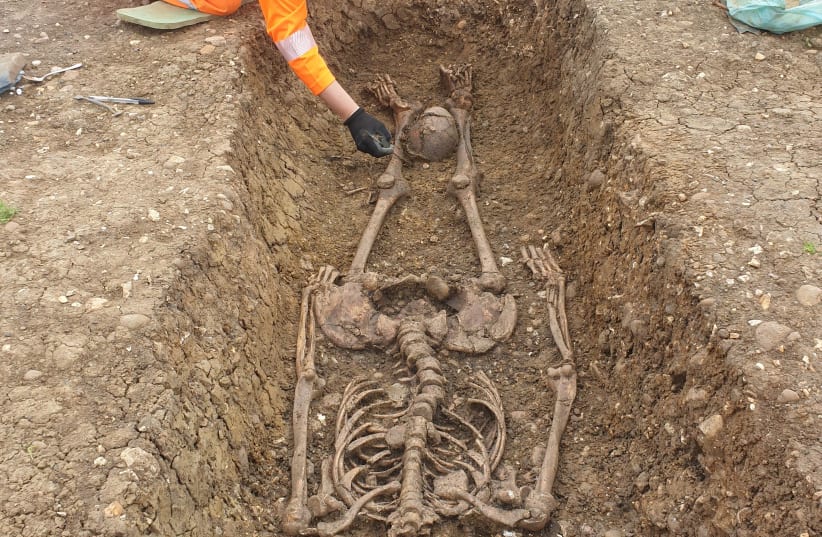A Roman-era cemetery with some 425 buried remains, including decapitated skeletons whose heads were placed between their legs, was discovered in a site called Fleet Marston, near the town of Aylesbury in southeast England, archaeologists revealed on Saturday.
The cemetery was unearthed by the commercial archaeological contractor corporation COPA JV. The dig was conducted by approximately 50 archaeologists on behalf of England's new high-speed railway, called HS2. The site was excavated for over a year and uncovered parts of an ancient town sitting along a major Roman road. Parts of the road were widened and may have been used as a marketplace with added space for carts and stalls.
The team uncovered a series of enclosures that probably contained domestic structures, and were connected by a major Roman road. It also unearthed commercial artifacts including over 1,200 coins, and lead weights; domestic metal artifacts including spoons, pins and brooches; and artifacts used for prayer or leisure including gaming dice and bells.
The findings indicated that the town likely included commercial and industrial activity and may have been an important stop along the road that led to the old Roman capital of Verulamium (St. Albans today). The number of burials in the nearby cemetery suggests that there was a population influx into the town during the middle-late Roman period, possibly due to an increase in agricultural activity.
The burial spots mostly revealed skeletons, while some indicated cremation. There were two separate areas of burial, which could have indicated separate groups or tribes. But the most unusual finding was that some 10% of the skeletons were decapitated, in many cases with their severed heads buried between their legs.
The severed heads could have belonged to criminals or outcasts, according to the archaeologists, but also could have been a normal burial rite, as other late-Roman period excavations also revealed a small number of decapitated bodies.
"The excavation is significant in both enabling a clear characterization of this Roman town but also a study of many of its inhabitants," said Richard Brown, Senior Project Manager for COPA.
"Along with several new Roman settlement sites discovered during the HS2 works it enhances and populates the map of Roman Buckinghamshire,” he said.

